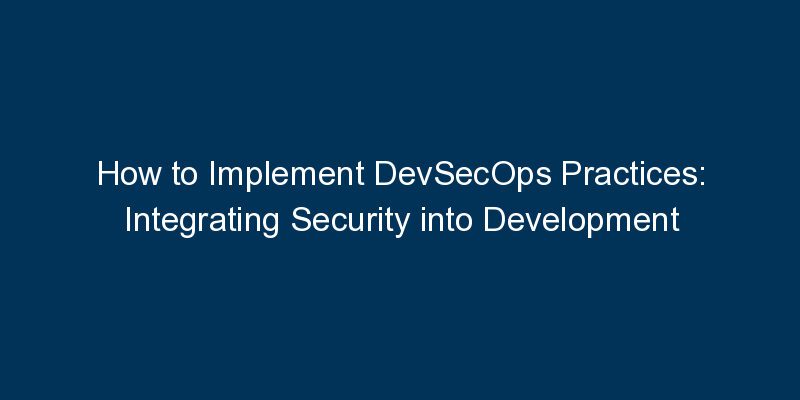DevSecOps, a combination of development, security, and operations, emphasizes the importance of integrating security practices throughout the software development lifecycle. This blog provides a comprehensive guide on how to implement DevSecOps practices, empowering organizations to build and deploy secure applications seamlessly.
Introduction:
Traditional software development often treats security as a later-stage concern. DevSecOps, on the other hand, integrates security practices from the outset, ensuring that security is an integral part of the development and deployment process. This guide explores the key steps in implementing DevSecOps practices.
Key Steps to Implement DevSecOps Practices:
- Collaborative Culture: Foster a collaborative culture that encourages communication and collaboration between development, security, and operations teams. Break down silos and promote shared responsibility for security.
- Shift-Left Security: Implement a “shift-left” approach by integrating security practices early in the development process. This includes incorporating security checks into the coding phase and conducting security assessments during code reviews.
- Automated Security Testing: Integrate automated security testing tools into the continuous integration/continuous deployment (CI/CD) pipeline. This ensures that security checks are conducted automatically at every stage of the development lifecycle.
- Container Security: Address security considerations in containerized environments. Implement container scanning tools to identify vulnerabilities in container images and enforce security policies for container deployment.
- Infrastructure as Code (IaC) Security: Apply security practices to Infrastructure as Code (IaC). Ensure that cloud infrastructure configurations are secure by incorporating security checks into the IaC development and deployment process.
- Continuous Monitoring and Incident Response: Implement continuous monitoring for security threats in production environments. Establish an incident response plan that enables rapid identification, containment, and resolution of security incidents.
Conclusion:
Implementing DevSecOps practices is essential for organizations aiming to build and deploy secure applications efficiently. By following the steps outlined in this guide, businesses can integrate security seamlessly into their development processes, reducing the risk of vulnerabilities and enhancing overall cybersecurity.






















Comments